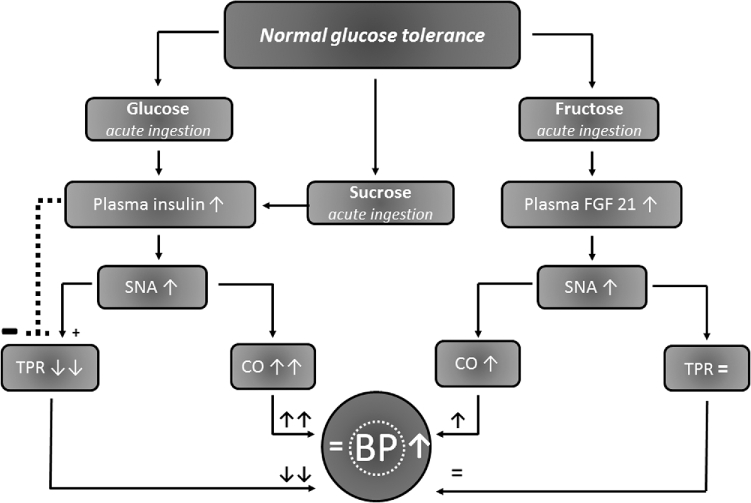FIGURE 1.
Schematic depiction of the proposed mechanisms by which blood pressure is influenced in response to glucose, sucrose, and fructose ingestion in subjects with normal glucose tolerance. The main difference between sucrose—whose cardiovascular actions are more related to glucose than to fructose (26)—and fructose can best be explained by the actions of insulin, which, in response to sucrose, will dose-dependently increase CO by increasing stroke volume and heart rate owing to attenuated systemic vascular resistance (48), whereas the impact of fructose on the release of insulin is marginal (47). Therefore, sucrose- or glucose-induced reductions in TPR are largely offset by increases in CO, and consequently will not change the blood pressure. In contrast, acute fructose ingestion has only little overall effect on plasma insulin but increases plasma FGF-21, which increases SNA. This, in turn, leads to augmented CO, which, in combination with an unchanged or only slightly increased TPR, increases the overall BP. BP, blood pressure; CO, cardiac output; FGF-21, plasma fibroblast growth factor 21; SNA, sympathetic nerve activity; TPR, total peripheral resistance; ↓, decrease; ↑, increase; ↓↓, pronounced decrease; ↑↑, pronounced increase; —, inhibition; +, augmentation; =, unchanged.

